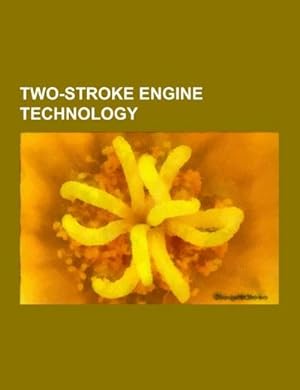9781156676882 (1 risultati)
Tipo di articolo
- Tutti gli articoli
- Libri (1)
- Riviste e Giornali
- Fumetti
- Spartiti
- Arte, Stampe e Poster
- Fotografie
- Mappe
-
Manoscritti e
Collezionismo cartaceo
Condizioni
- Tutte
- Nuovi
- Antichi o usati
Legatura
- Tutte
- Rilegato
- Brossura
Ulteriori caratteristiche
- Prima edizione
- Copia autografata
- Sovraccoperta
- Con foto
- No print on demand
Paese del venditore
Valutazione venditore
-
Two-stroke engine technology
Editore: Reference Series Books LLC Mai 2014, 2014
ISBN 10: 1156676886ISBN 13: 9781156676882
Da: BuchWeltWeit Ludwig Meier e.K., Bergisch Gladbach, Germania
Libro Print on Demand
Taschenbuch. Condizione: Neu. This item is printed on demand - it takes 3-4 days longer - Neuware -Source: Wikipedia. Pages: 54. Chapters: Two-stroke diesel engines, Two-stroke petrol engines, Two-stroke engine, Gasoline direct injection, Ernst Degner, Fairbanks-Morse, Expansion chamber, Napier Deltic, Unit construction, Roots type supercharger, Bourke engine, Opposed-piston engine, Split-single, Commer TS3, Two-stroke power valve system, Rotax, Junkers Jumo 205, Maico, Dry sump, EMD 645, Detroit Diesel 110, EMD 710, EMD 567, Wärtsilä-Sulzer RTA96-C, Joseph Day, Reed valve, Detroit Diesel Series 71, Junkers Jumo 204, Variable compression ratio, Single cylinder engine, Walter Kaaden, Volumetric efficiency, Tuned pipe, Schnuerle porting, Power band, Brons, Orbital Corporation, Detroit Diesel Series 149, Throttle response, Napier Culverin, Allen Scythe, Italian American Motor Engineering, Envirofit International, Detroit Diesel Series 92, Junkers Jumo 223, Polini, Back pressure, Kadenacy effect, Scavenging, Malossi, Exhaust pulse pressure charging, Kramer graph, MAN B&W K108ME-C, Inertial supercharging effect, Detroit Diesel Series 51, MTH Racing engines, Zabel, Port-map. Excerpt: In internal combustion engines, gasoline direct injection (GDI), also known as petrol direct injection or direct petrol injection, is a variant of fuel injection employed in modern two-stroke and four-stroke gasoline engines. The gasoline is highly pressurized, and injected via a common rail fuel line directly into the combustion chamber of each cylinder, as opposed to conventional multi-point fuel injection that happens in the intake tract, or cylinder port. In some applications, gasoline direct injection enables a stratified fuel charge (ultra lean burn) combustion for improved fuel efficiency, and reduced emission levels at low load. The major advantages of a GDI engine are increased fuel efficiency and high power output. Emissions levels can also be more accurately controlled with the GDI system. The cited gains are achieved by the precise control over the amount of fuel and injection timings that are varied according to the load conditions. In addition, there are no throttling losses in some GDI engines, when compared to a conventional fuel injected or carbureted engine, which greatly improves efficiency, and reduces 'pumping losses' in engines without a throttle plate. Engine speed is controlled by the engine control unit/engine management system (EMS), which regulates fuel injection function and ignition timing, instead of having a throttle plate that restricts the incoming air supply. Adding this function to the EMS requires considerable enhancement of its processing and memory, as direct injection plus the engine speed management must have very precise algorithms for good performance and drivability. The engine management system continually chooses among three combustion modes: ultra lean burn, stoichiometric, and full power output. Each mode is characterized by the air-fuel ratio. The stoichiometric air-fuel ratio for gasoline is 14.7:1 by weight, but ultra lean mode can involve ratios as high as 65:1 (or even higher in some engines, for very limited perio 54 pp. Englisch.


